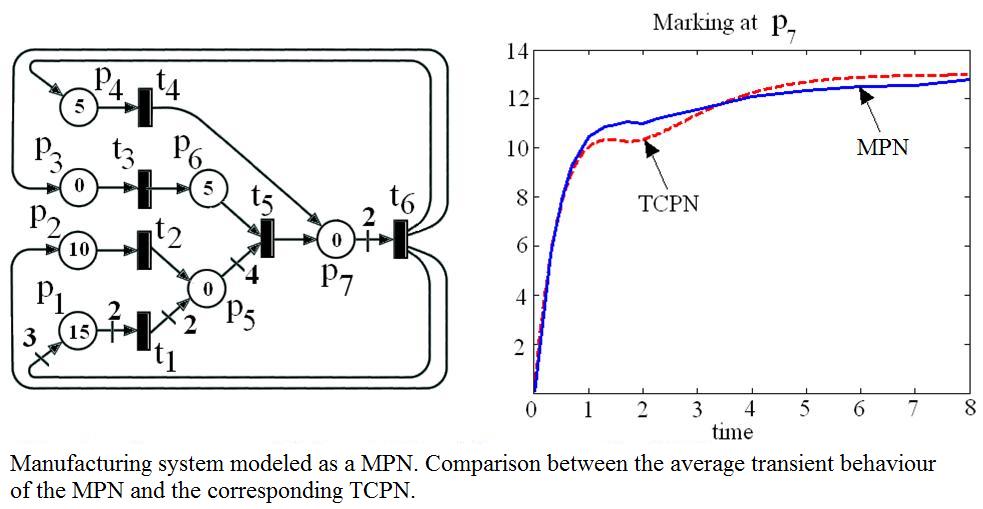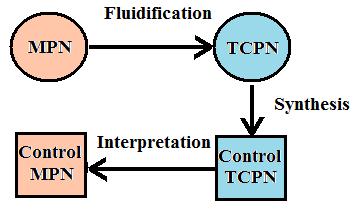Research
My Thesis research is devoted to the study of continuous Petri nets. The work done at the present goes into three different, but strongly related, directions:
-
The study of properties of timed continuous Petri nets: controllability, synthesis of controllers and the relation between liveness and timing.
-
The approximation that fluid Petri net models (fully continuous or hybrid) provide to the average behaviour of stochastically timed discrete Petri nets (under exponential delays).
-
The application of those results for controlling discrete Petri nets by using controllers originally designed for the corresponding TCPN models.
The application of Petri nets include the analysis of communication protocols and manufacturing systems, the implementation of sequence controllers, validation in software development, and performance evaluation in multiprocessor systems, communication networks, production systems, supply chains, etcetera. Nevertheless, in Petri nets, as in other DES, the state explosion problem frequently appears, making impossible the application of enumerative techniques.
In order to overcome such problem, the fluidification has been introduced in Petri nets. The idea is to analyze the system by studying a relaxed "fluid" version of it. Different definitions of fluid Petri nets have been introduced in the literature. One of them is the so called timed continuous Petri net (TCPN) model under infinite server semantics. It has been found that TCPN systems approximate interesting classes of DES. An important advantage found in fluid models is that more analytical techniques can be used for the analysis of some interesting properties, like liveness [8], controllability [1] and the synthesis of controllers, either for the optimal steady-state control problem or dynamic control for reaching a desired marking [6].
In [3] it has been shown that a TCPN system, with white noise added to the flow (leading to state perturbation), can approximate the average value and covariance matrix of the marking of the corresponding Markovian Petri net (MPN, a Petri net in which transitions are timed with exponentially distributed random delays). The larger the enabling degree of the transitions, the better the approximation.

This approximation allows to interpret and apply a control law initially designed for a TCPN system into the corresponding MPN one, obtaining thus a control policy for driving a live MPN system in such a way that the average value of its marking will reach a desired value, by just applying additional delays to the controllable transitions. This constitutes an important difference with the control laws derived for DES in the past. This result is illustrated by means of a given application example: the stock level control of a Kanban-based automotive assembly line [4].

At the present, the approximation of the average behaviour of MPN systems provided by partially fluidified models (i.e., Hybrid Petri Nets) is being investigated [5]. Hybrid Petri net models are interesting due to its modelling power. For instance, we are analyzing the problem of control and optimization for urban traffic networks based on hybrid Petri models [7].